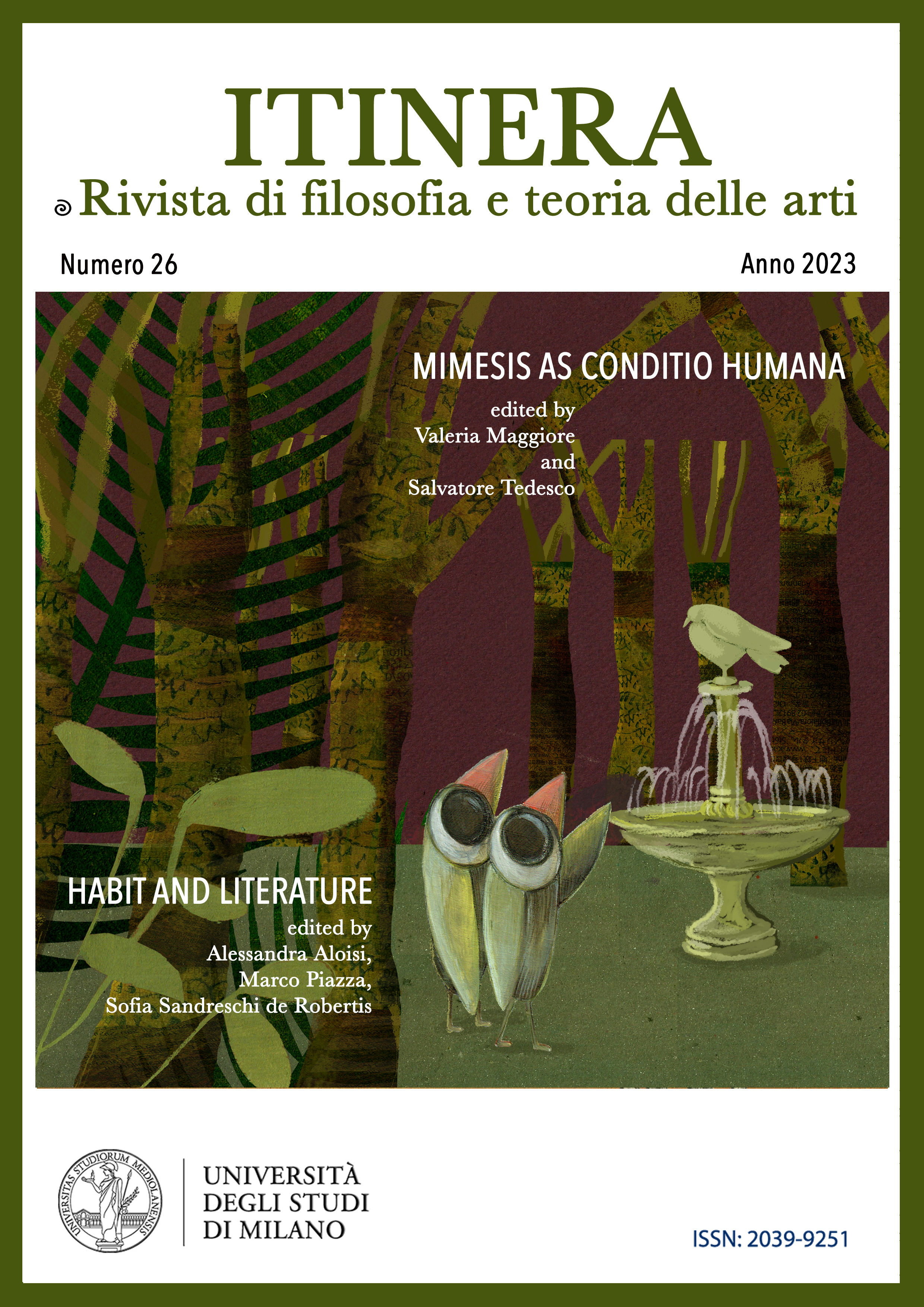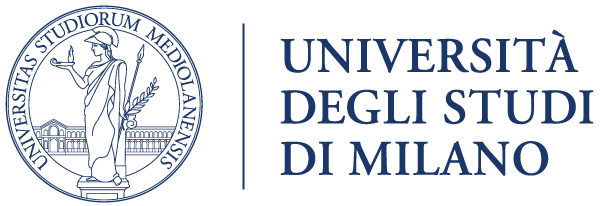What is real in hyperrealism? Pictorial representation and layers of the visible
Parole chiave:
hyperrealism, depiction, naturalisation of perception, intensities of realityAbstract
American hyperrealist painting is one of the most famous phenomena of American culture in general, but also one of the most difficult to fit into the art-historical canon. Hyperrealism causes difficulties in interpretation because it is placed between traditional mimetic painting skills and the imaginary of American popular culture. In this article, we will suggest that hyperrealism may be evaluated as primarily a philosophical problem of the understanding of reality and its transformation into a pictorial surface. We will try to foreground the neglected possibility that the “excess of the real” in a painting can be in some allegorical function: as the opposite of reality, in other words, as an absence rather than a presence. Moreover, we will point out the twofold contingency of the hyperrealist pictures: as a philosophical platform for the study of pictorial representation on the one hand and as an evidence that there is no universal theory of pictorial depiction that would establish a connection between extra-pictorial reality and representation on the other. The article will analyze why hyperrealism as an artistic style is not crucially defined by the problem of mimesis, but rather by the problem of (dis)continuity in regard to reality. Instead of asking why hyperrealist paintings are so close to human perception of the world, we try to unveil consequences of its playing on the edges of complex systems such as representation, depiction, similarity, imagination, simulation and recognition. Referring to the aspects of reality in painting, photography and conceptual art we will consider to what extent theory can influence a seemingly straightforward artistic phenomenon to gain a different kind of relevance, while providing insights into the possibilities of viewing hyperrealist paintings as both part of the cultural imaginary and philosophical objects.
Riferimenti bibliografici
Agamben, G., What is an Apparatus?, in Id., What is an Apparatus? And Other Essays, Stanford University Press, Stanford (CA) 2009, pp. 1-24.
Barthes, R., Rhetoric of the image, in Id. Image – Music – Text, trans. S. Heath, Hill and Wang, New York 1977, pp. 32-51.
Battcock, G. (ed.), Super Realism: A Critical Anthology, E.P. Dutton & Co., New York 1977.
Chase, L., Hyperrealism, Rizzoli, New York 1975.
Chase, L., Les Hyperréalistes Américains, Editions Filipacchi, Paris 1973.
Close C., Estes R., Interview with Linda Chase and Ted McBurnett in “Art in America” 60 (1972).
Courbet, G., The Realist Manifesto & Champfleury, Letter about Courbet, in L. Nochlin (ed.), Realism & Tradition in Art, 1848-1900, Prentice-Hall, Englewood Cliffs (NJ) 1966, pp. 33-45.
Currie, G., Visual Conceptual Art, in P. Goldie and E. Schellekens (eds.) Philosophy and Conceptual Art, Oxford University Press, Oxford 2007, pp. 33-50.
Foucault, M., The Confession of the Flesh, in C. Gordon (ed. by), Power/Knowledge. Selected Interviews and Other Writings 1972-1977, Pantheon Books, New York 1980, pp. 194-228.
Greenberg, C., After Abstract Expressionism, in “Art International”, October (1962), pp. 24-32.
Greenberg, C., Towards a newer Laocoon, in Partisan Review, 7, n. 4 (1940), pp. 296-310.
Kosuth, J., Art After Philosophy and After. Collected Writings 1966–1990, ed. G. Guercio, MIT Press, Cambridge MA 1991 (1969), pp. 13-32.
Krauss, R., Notes on the Index: Seventies Art in America, in “October”, n. 3 (Spring 1977), pp. 68-81.
Krauss, R., Notes on the Index: Seventies Art in America: Part Two, in “October”, n. 4 (Autumn 1977), pp. 58-67.
Lebensztejn, J.-C., Photorealism, Kitsch and Venturi (trans. K. Cooper), in “SubStance” 10, n. 2, issue 31 (1981): The Thing USA: Views of American Objects, pp. 75-104.
Mandel, J.P., The Deductive Image, in G. Battcock (ed.) Super Realism: A Critical Anthology, E. P. Dutton & Co., New York 1975, pp. 36-48.
Nochlin, L., Realism, Penguin Books, Harmondsworth 1971.
Nochlin, L., The Body in Pieces: The Fragment as a Metaphor of Modernity, Thames & Hudson, New York 1994.
Peariso, C.J., Styleless Style? What Photorealism Can Tell Us About “The Sixties”, in “Journal of American Studies” 47, n. 3 (August 2013), pp. 743-757.
Purgar, K., Iconic Bodies: Semiotics of Masculinity in Fashion Photography and Art History, in Ž. Paić (ed.), Fashion Theory and the Visual Semiotics of the Body, Cambridge Scholars Publishing, Newcastle 2022, pp. 146-151.
Roelstraete, D., Modernism, Postmodernism and Gleam: On the Photorealist Work Ethic, in “Afterall: A Journal of Art, Context and Enquiry” 24 (Summer 2010), https://www.afterall.org/articles/modernism-postmodernism-and-gleam-on-the-photorealist-work-ethic/
Sontag, S., Regarding the Pain of Others, Picador, New York 2003.
Völz, J., The Index and Its Vicissitudes: Hyperrealism from Richard Estes to Andreas Gursky, in “Amerikastudien / American Studies” 52, n. 1 (2007), thematic issue: Transatlantic Perspectives on American Visual Culture, pp. 81-102.
Dowloads
Pubblicato
Fascicolo
Sezione
Licenza
Copyright (c) 2024 Alice Barale

Questo lavoro è fornito con la licenza Creative Commons Attribuzione - Condividi allo stesso modo 4.0.
Gli autori che pubblicano su questa rivista accettano le seguenti condizioni:
1. Gli autori mantengono i diritti sulla loro opera e cedono alla rivista il diritto di prima pubblicazione dell'opera, contemporaneamente licenziata sotto una Licenza Creative Commons - Attribuzione - Condividi allo stesso modo 4.0 internazionale che permette ad altri di condividere l'opera indicando la paternità intellettuale e la prima pubblicazione su questa rivista.
2. Gli autori possono aderire ad altri accordi di licenza non esclusiva per la distribuzione della versione dell'opera pubblicata (es. depositarla in un archivio istituzionale o pubblicarla in una monografia), a patto di indicare che la prima pubblicazione è avvenuta su questa rivista.
3. Gli autori possono diffondere la loro opera online (es. in repository istituzionali o nel loro sito web) prima e durante il processo di submission, poiché può portare a scambi produttivi e aumentare le citazioni dell'opera pubblicata (Vedi The Effect of Open Access).





